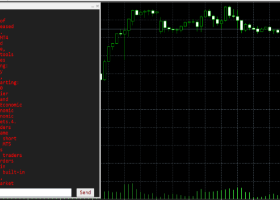Trading Strategy Using Fear and Greed Indicator
1. Confirm the Trend
- Higher Timeframe (HTF) Analysis: Start by identifying the trend direction using a higher timeframe (e.g., daily or 4-hour charts). Determine whether the trend is bullish or bearish.
2. Identify Pullback with Sentiment
-
Long Scenario (Greed Sentiment):
- Fear and Greed Indicator: Look for a pullback in price while the indicator shows greed sentiment (high value on the greed side).
- Divergence: Check for a divergence between the price action and the Fear and Greed Indicator during the pullback (e.g., price making lower lows while the indicator shows higher lows).
-
Short Scenario (Fear Sentiment):
- Fear and Greed Indicator: Look for a pullback in price while the indicator shows fear sentiment (high value on the fear side).
- Divergence: Check for a divergence between the price action and the Fear and Greed Indicator during the pullback (e.g., price making higher highs while the indicator shows lower highs).
3. Wait for a Reaction on Smaller Timeframes
- Lower Timeframe Analysis: Once the price pulls back to a significant level and the Fear and Greed Indicator shows the respective sentiment (greed for long, fear for short), switch to a lower timeframe (e.g., 1-hour or 15-minute charts).
- Break of Structure: Look for a break of structure in the direction of the higher timeframe trend.
- Long Scenario: Look for a higher high.
- Short Scenario: Look for a lower low.
4. Entry Points
- First Entry: Enter as soon as the break of structure occurs on the lower timeframe, confirming continuation in the direction of the higher timeframe trend.
- Second Entry (Optional): If the first entry is missed, wait for a new pullback on the lower timeframe with the respective sentiment (greed for long, fear for short) to an area of interest (e.g., previous support or resistance, or order block).
5. Manage the Trade
- Stop Loss: Place your stop loss below the recent swing low (for long trades) or above the recent swing high (for short trades) on the lower timeframe.
- Take Profit: Set your take profit target at the next significant resistance (for long trades) or support (for short trades) level on the higher timeframe, or use a risk-to-reward ratio of at least 1:2.
- Trend Identification: Daily chart shows a bullish trend.
- Pullback with Sentiment: Price pulls back to a key support level, and the Fear and Greed Indicator shows high greed sentiment, with a possible divergence.
- Lower Timeframe Entry: Switch to the 1-hour chart and wait for a break of structure.
- Entry: Enter the trade on the break of structure or wait for another pullback with the respective sentiment.
- Manage Trade: Place stop loss below recent swing low and set take profit at the next resistance level, or based on risk-reward.
- Patience: Wait for all conditions to be met before entering a trade.
- Risk Management: Always use stop losses to protect your capital.
- Confirmation: Additional indicators or price action patterns can be used for extra confirmation.
- Recommended broker for my products: https://cabinet.a-partnership.com/visit/?bta=35382&brand=admiralmarkets
This strategy combines market sentiment and price action analysis for clear entry and exit points, utilizing both higher and lower timeframe analysis. Adjust the specific timeframes and sentiment levels according to your trading style and market conditions.



